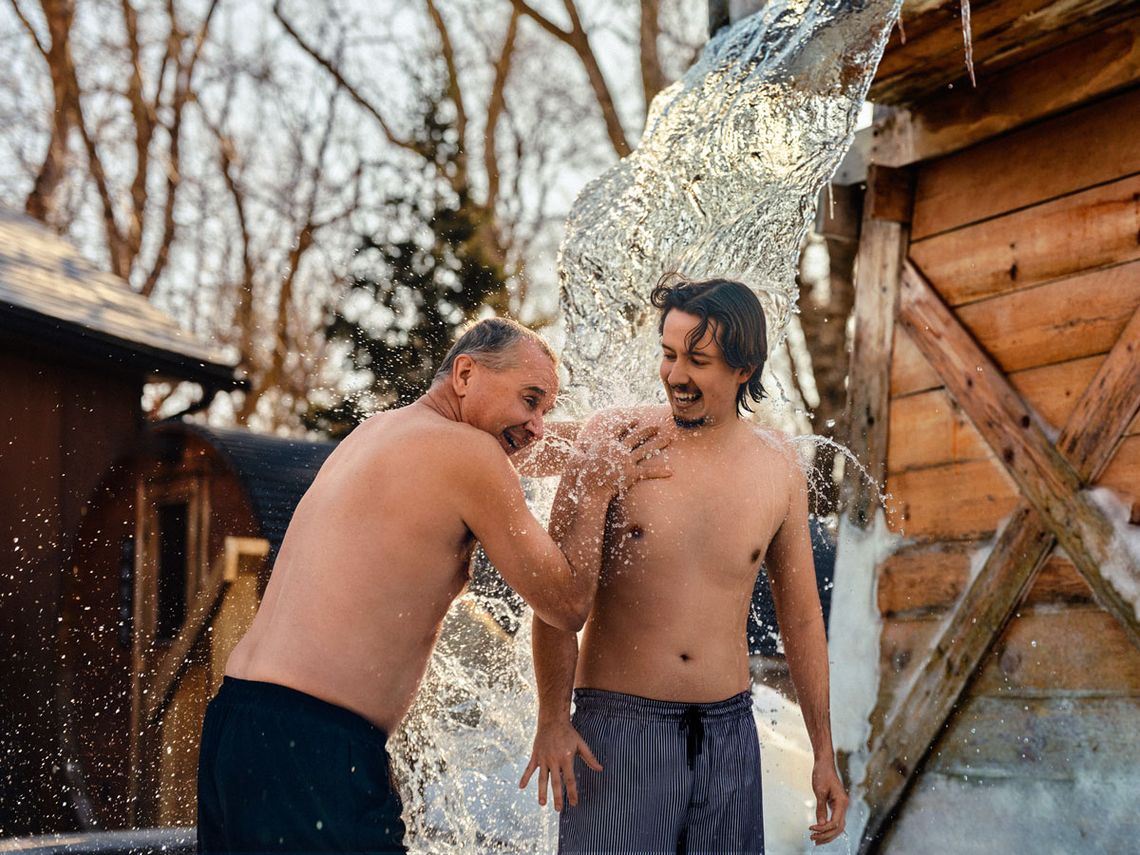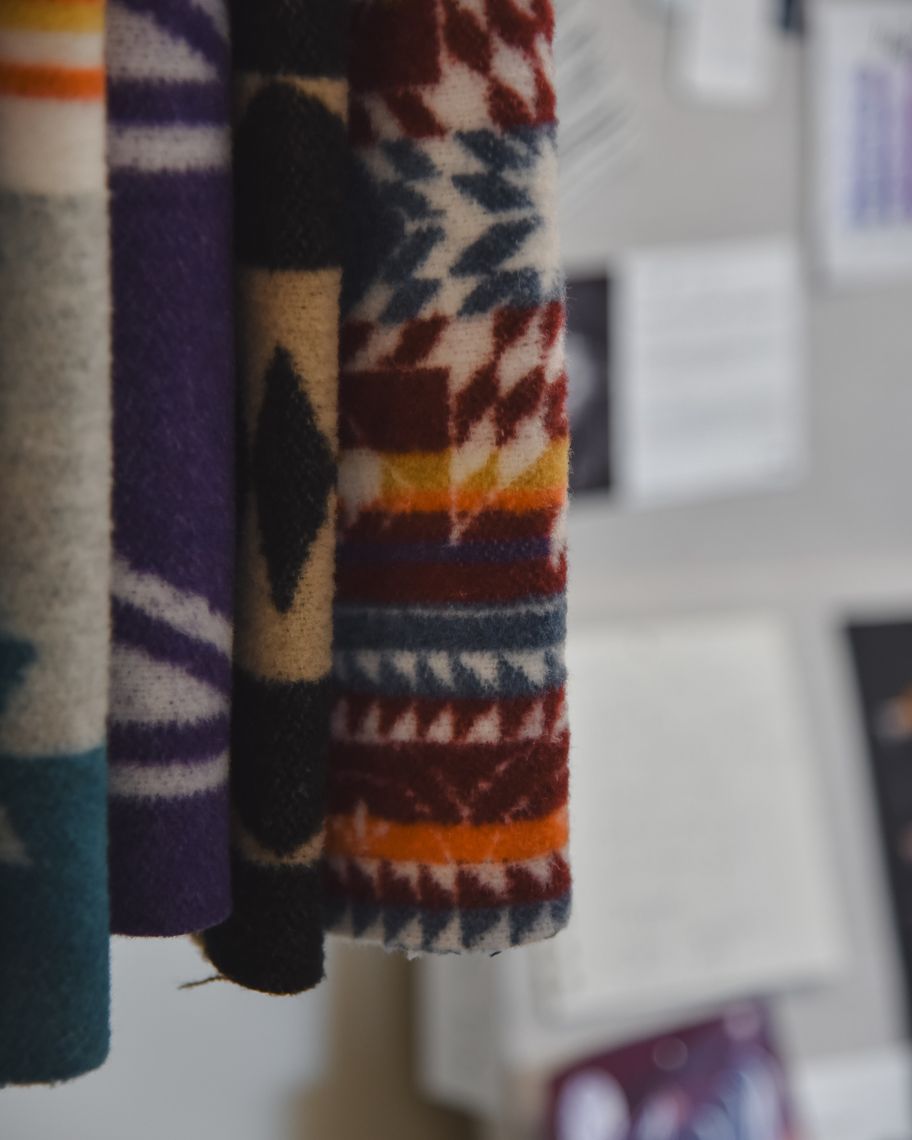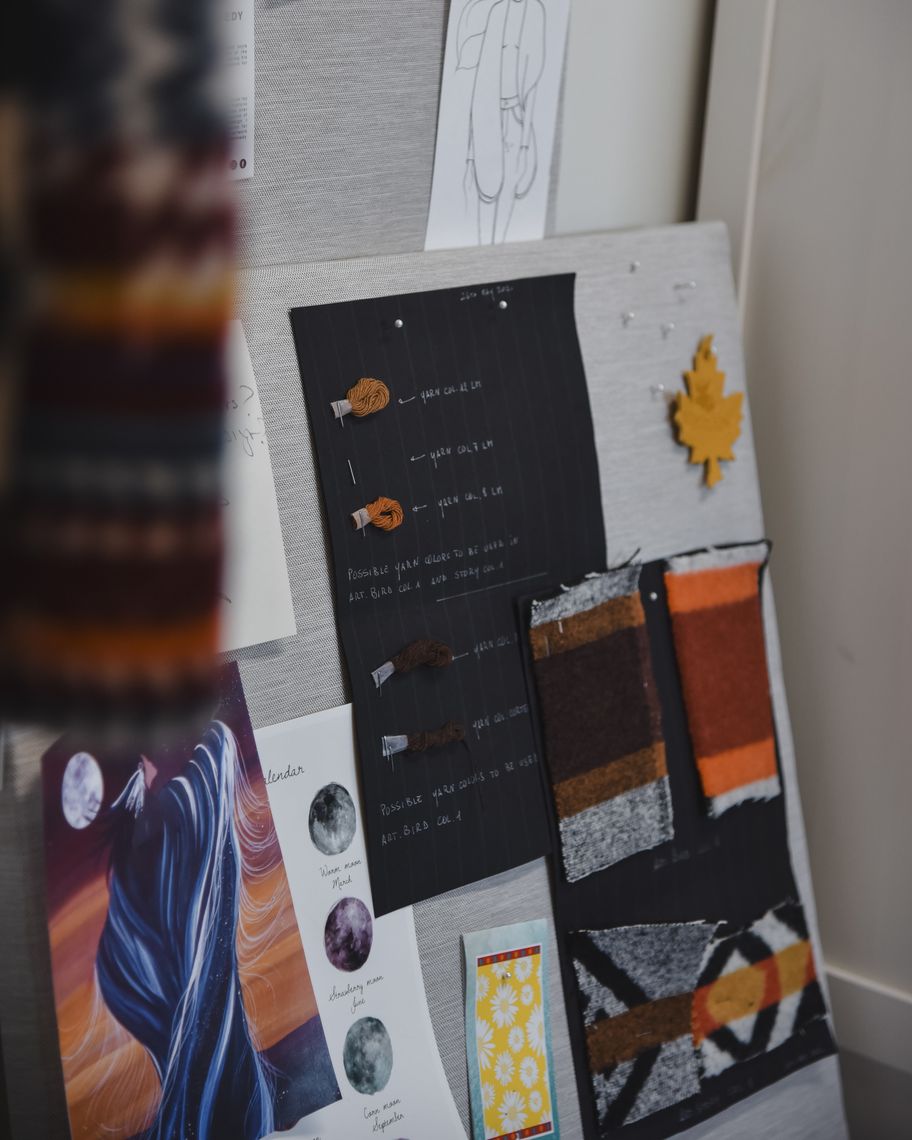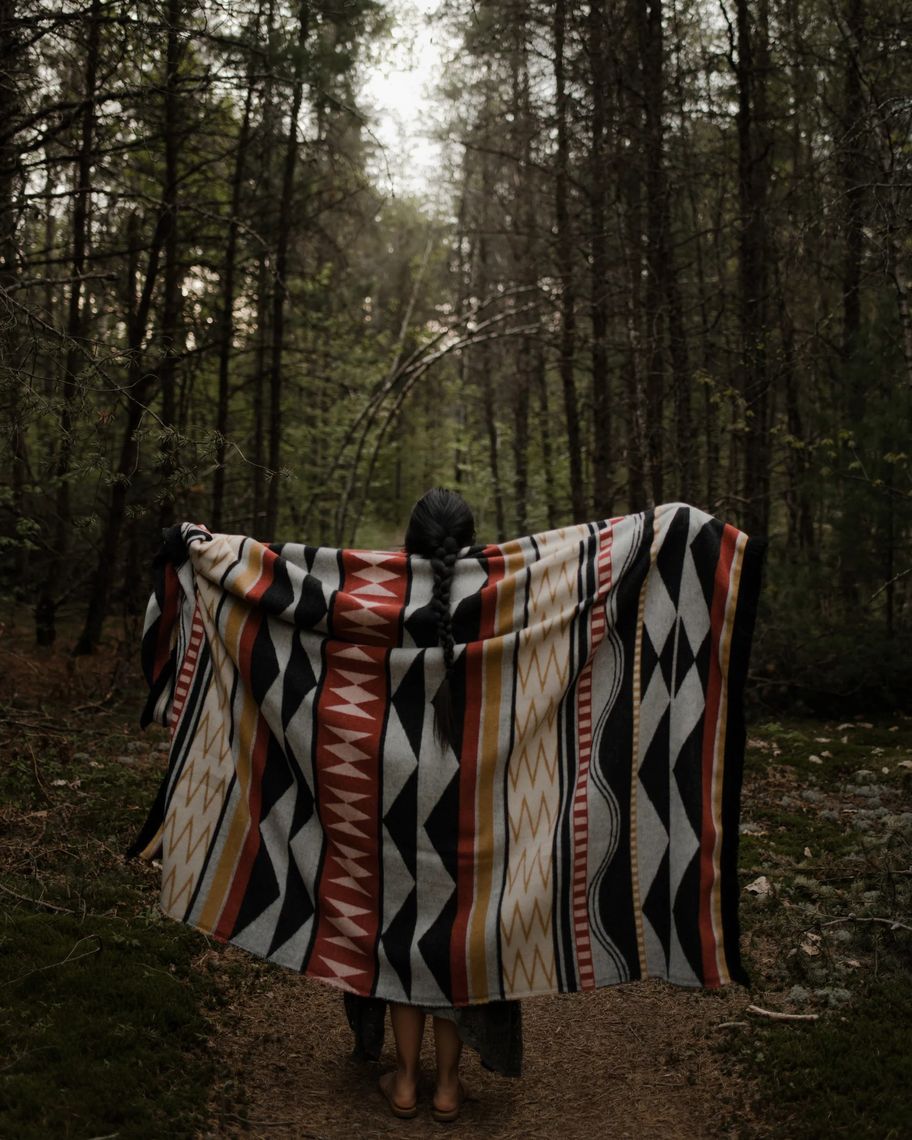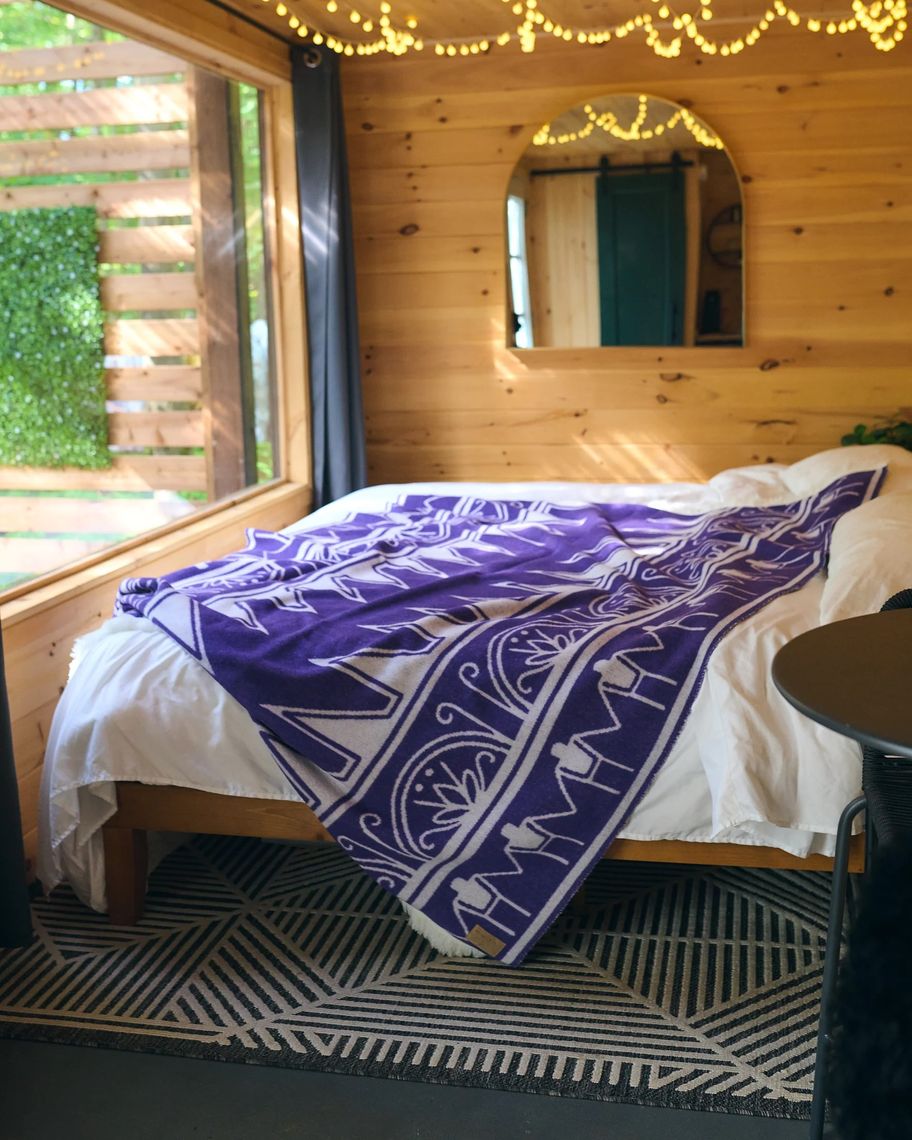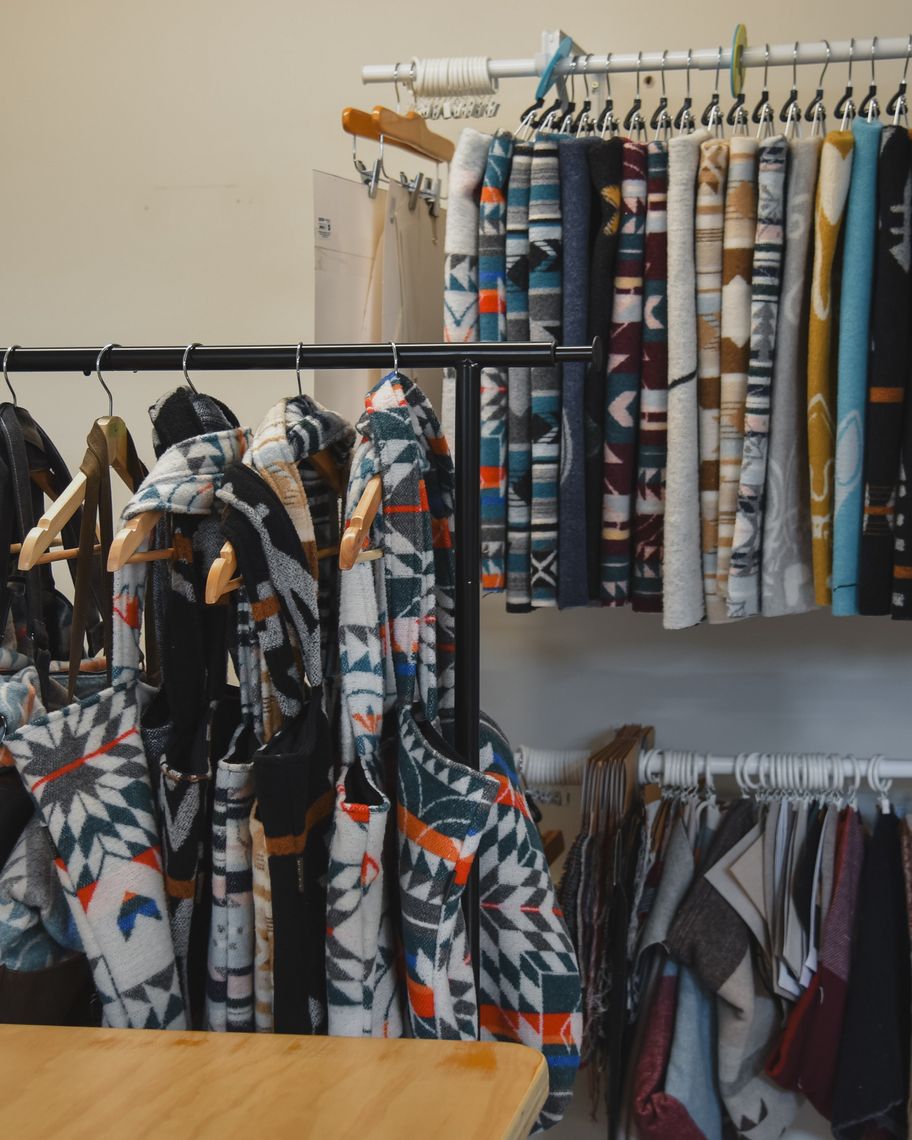When MINI TIPI releases new collections, the patterns, the designs and all the knowledge that comes with it speak to the people from that Nation or village. “Stories have been told through arts to share teachings for generations, we just get to keep the traditions going in a more modern way,” explains Trisha. “A lot of knowledge was lost due to residential schools and colonization. Being able to share stories and traditions with a wider audience brings art to life and revitalizes the community. We just want to highlight incredible artists and give their voices a platform. We want to celebrate the culture with everyone.”
Another part of storytelling for Indigenous people has always been done orally, but that also won’t last forever, explains Trisha. “Putting it down to paper, or better yet, textiles, allows us to keep traditions alive for generations to come. Elders are survivors and many younger people are reconnecting their culture. The youth are so resilient, and they want to learn. Even non-Indigenous people want to learn. Canada is changing.”
“People are thirsty for knowledge and the truth. We do what we do because it’s important. It’s never really been about selling a product,” Melanie pauses, “before, we used generic fabrics and the company was doing well, it was a success. But we didn’t know the artists or the stories behind them and we realized it was and we didn’t want to be a part of that. So, in 2019, Trish made her first motif, and we never looked back.”
Melanie further explains their past with generic fabrics and their research for authenticity: “We realized there weren’t artists behind the generic fabrics because motifs were often stolen, and the artists weren’t compensated. We changed that; our artists have royalties. It was really important for us to implicate ourselves in our community. It’s how we measure the success of our company, by the positive impact it has on the community.”

